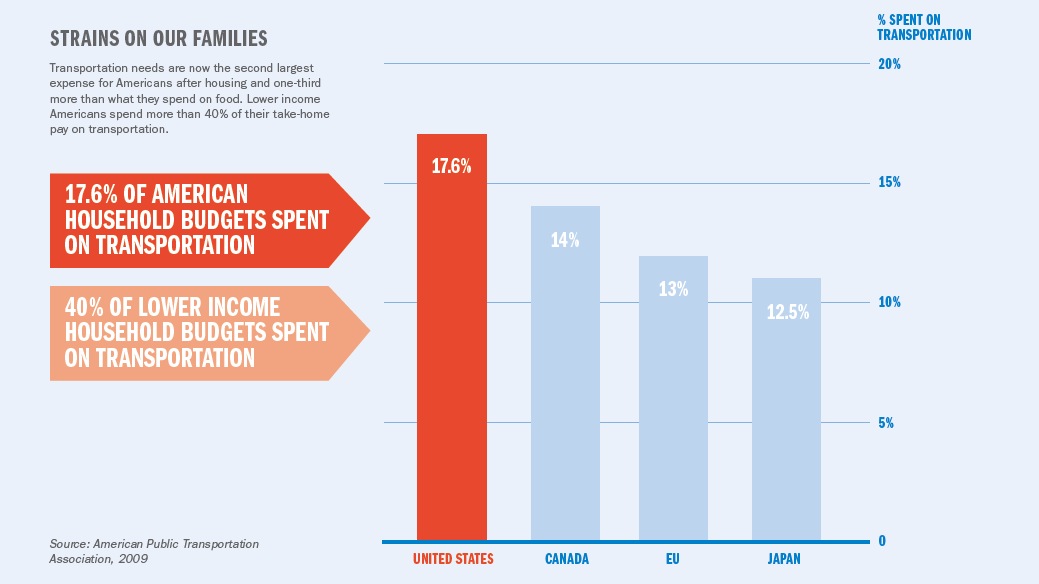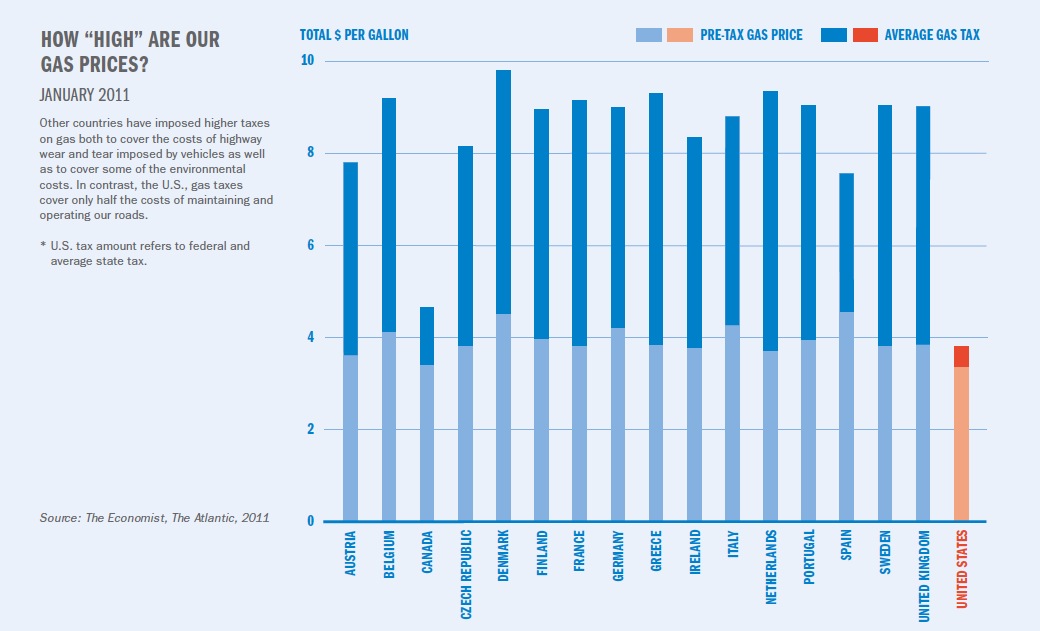BUILDING AMERICA’S FUTURE
Introduction
Rebuilding America’s economic foundation is one of the most important missions we face in the 21st century. Our parents and grandparents built America into the world’s leading economic superpower. We have a responsibility to our own children and grandchildren to strengthen—not squander —that inheritance, and to pass on to them a country whose best days are still ahead.
Our citizens live in a turbulent, complicated, and competitive world. The worst recession in eighty years cost us trillions in wealth and drove millions of Americans out of their jobs and homes. Even more, it called into question their belief in our system and faith in the way forward.
Our infrastructure—and the good policy making that built it—is a key reason America became an economic superpower. But many of the great decisions which put us on that trajectory are now a half-century old. In the last decade, our global economic competitors have led the way in planning and building the transportation networks of the 21st century. Countries around the world have not only started spending more than the United States does today, but they made those financial commitments—of both public and private dollars—on the basis of 21st-century strategies that will equip them to make commanding strides in economic growth over the next 20-25 years.
Unless we make significant changes in our course and direction, the foreign competition will pass us by, and a real opportunity to restore America’s economic strength will be lost. The American people deserve better.
Falling Apart and Falling Behind lays out the economic challenges posed by our ailing infrastructure, provides a comparative look at the smart investments being made by our international competitors, and suggests a series of recommendations for crafting new innovative transportation policies in the U.S.
A Mounting Crisis
This report frames the state of our infrastructure in terms of the new economic realities of the 21st-century economy and presents the challenges we currently face. The surge in global trade has realigned America’s business transport needs, complicating supply chains and increasing the need for sophisticated intermodal transportation. Our economically vital gateways and corridors now operate over capacity, imposing costs of $200 billion a year. Our passenger transport system, especially in our major metropolitan regions, is also burdened with costly congestion as passenger travel increases. Largely run on gasoline, our transportation system is environmentally, politically, and economically unsustainable. We have the world’s worst air traffic congestion, in part because we are still using the radar-based air traffic control system developed in the 1950s.
The first section of the report, A Mounting Crisis, makes the case why U.S. infrastructure has fallen from first place in the World Economic Forum’s 2005 economic competitiveness ranking to number 15 today. We have let more than a half-century go by without devising a strategic plan on a national scale to update our freight and passenger transport systems. The size of our federal investment in transportation infrastructure as a share of GDP has been dwindling for decades, and most federal funds are dispersed to projects without imposing accountability and performance measures. This lack of vision, lack of funding, and lack of accountability has left every mode of transportation in the United States—highways and railroads, airports and sea ports—stuck in the last century and ill-equipped for the demands of a churning global economy.
Losing Ground to Our Global Competitors
The second section of the report, Losing Ground to Our Global Competitors, takes an international look at transportation infrastructure and highlights certain themes that unify our competitors’ plans while setting our transportation policies apart. Governments around the world—from the EU to China, Canada to Australia—are making unprecedented national investments in transportation infrastructure on the basis of new plans to promote economic growth through infrastructure.
Guided by principles of improving economic efficiency and sustainability, other countries are devoting most of their attention and resources to building the high-tech and low-carbon networks for the 21st century. In particular, they are investing in intermodal freight facilities and strategic corridors, and they are building high-speed rail. A comparative look at high-speed rail networks around the world offers lessons about how to successfully build high-speed rail in strategic corridors—namely between Boston and Washington, between LA and San Francisco, and in a hub-and-spoke around Chicago—that will ease air travel congestion around the country and unlock potential economic growth in those regions.
Recommendations for Reform
The third section of the report, Recommendations for Reform, contains a clear set of recommendations for moving our economy—and the case for strategic investment in infrastructure—forward. To stay competitive in a 21st-century economy, the federal government must:
Develop a national infrastructure strategy for the next decade that makes choices based on economics, not politics. The U.S. should adopt a 10-year national plan for making strategic investments in our nation’s infrastructure. The plan should focus on transportation, but include other infrastructure challenges such as water and the electric grid. To keep America economically competitive, this plan must be as significant in scale as the plans adopted by our competitor nations. To do so, we believe, it must spur an investment of a least $200 billion per year. This national infrastructure strategy will create nearly 5 million jobs for the next decade. Experts agree that $1 billion in infrastructure investment creates more than 25,000 jobs at construction sites and factories producing needed raw materials. This investment would create nearly half of the 12.5 million jobs that we need to revive the American economy and keep them in place for the next decade.
Pass a 6-year transportation bill updated to compete in the 21st-century global economy. Since the last transportation bill expired in 2009, Washington has abdicated its responsibility, with seven extensions of federal funding. The new bill must move from an essentially recycled version that thinly distributes funds based on archaic formulas and political expediency to a plan that sets clear priorities and makes hard choices based on increasing economic return and mobility while reducing congestion and pollution. As a result, the investment strategy will focus on projects that will yield results—Next Gen aviation system; high-speed rail in key corridors; freight rail; public transit; and maintenance of our crumbling transportation network.
Be both innovative and realistic about how to pay. America needs a National Infrastructure Bank that can leverage private dollars and invest in the best big projects, including those that span state boundaries or encompass multiple modes of transportation. Once the U.S. economy improves, we should consider raising the nearly 20-year old federal gas tax and indexing it to inflation. Washington also needs to look at all long-term revenue generating options such as congestion pricing, carbon auctions, fees based on miles traveled, or reserves built into capital budgets.
Promote accountability and innovation. Under current transportation policy, Washington impedes local innovation while failing to impose accountability for money distributed across the country. Washington should set clear criteria for all funding, encourage state and local innovation through competitive grants, streamline the project delivery process to ensure projects are started quickly, and carefully audit the results to ensure projects are completed on time, on budget, and yielding promised results.
The U.S. must embark on a new American adventure—one that requires leadership and vision from our elected leaders. To achieve this we will need a bipartisan alliance of American leaders who believe we can achieve anything, can build anything, and can do anything we put our minds to—and who will in turn, convince our citizens that this course is not an option but a necessity to preserve our future strength and success—to preserve American greatness—greatness that was created by Americans over the last 235 years by their willingness to take on new challenges with the belief that our country could achieve anything.
Download the full version (PDF): Building America’s Future: Falling Apart and Falling Behind
About Building America’s Future
http://www.bafuture.org/
“Building America’s Future Educational Fund (BAF Ed Fund) is a bipartisan coalition of elected officials dedicated to bringing about a new era of U.S. investment in infrastructure that enhances our nation’s prosperity and quality of life.
Founded by former Governor Edward Rendell of Pennsylvania, former Governor Arnold Schwarzenegger of California, and Mayor Michael Bloomberg of New York, BAF Ed Fund boasts a politically diverse membership of state and local elected officials from across the nation.”
Tags: Arnold Schwarzenegger, Building America's Future, California, Edward Rendell, Michael Bloomberg, New York, Pennsylvania








 RSS Feed
RSS Feed